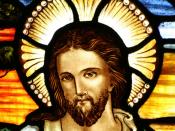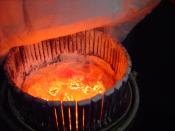The Crucible contains many allusions, which is a reference to something supposed to be known, but not explicitly mentioned; a covert indication; indirect reference. Miller uses allusions to convey the theological beliefs and religious convictions of his characters.
There is chaos in the town after the people there find out that there might be witches that inhabited the village. Abigail and her friends are accusing people of being possessed by demons. When Hale shows up he is convinced that there are witches in the town and believes Abigail. As Abigail walks through the crowd of people surrounding the courtroom where a meeting is being held all the people disperse away from her creating a pathway. In the Old Testament Moses comes to a sea and places his staff into the ground and suddenly the seas part allowing the Moses and the slaves to pass through the other side. When Abigail passes through the crowd, it opens up just like what had happened in the Old Testament.
This also is irony because Millers audience that is reading the play knows that Abigail is making up these false accusations, but some people in the town believe her and are making her into some kind of religious figure.
In the Crucible there is an allusion to Good vs. Evil. In Act III Danforth says, "a person is either with this court or he must be counted against it"(Miller 1137). The town is religiously and morally based so you are either classified under a believer or someone who believes in evil. The good people are seen as opponents of the court and the bad people are seen as proponents of the court. The irony in that is that the good people are treated like criminals and the criminals are treated like heroes.
Miller uses...


